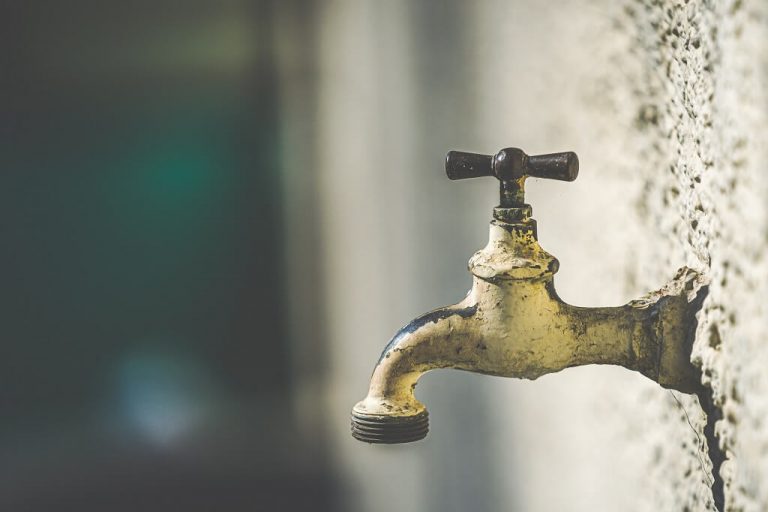Table of Contents [show]
Every form of home water pressure is frustrating and annoying. Whether it is taking too long for your washing machine or dishwasher to complete a cycle or you are spending several minutes to fill your bathtub or sink from your faucet, the culprit remains the same – low water pressure.
It is easier to fix the problem if it affects only one fixture. In that case, you only have to focus on the fixture or the pipes serving it. However, if the problem is widespread and affects the whole house water system, you have more work to do.
Either way, you should start by identifying the cause of low water pressure to resolve the problem effectively.
Is Your Water Meter Valve Completely Open?
Most homes have two primary shutoff valves that control water entry into the house. The water meter valve is the first shutoff valve, and you find it just beside the water meter on the main city supply pipe supplying your home. This valve is not for personal use, considering the water company owns it, and only their personnel should use it. But if you experience low water pressure across the entire home, especially after recent plumbing works, it may be due to a partially opened water meter valve.
If you notice a drop in water pressure across every fixture in your home after recent repair work, the meter valve should be your first port of call. You can find it on an outside wall of your house or in an underground box, in-between your home and the street. In some cases, it is present in an interior utility area like an attached garage or basement.
Is There A Pressure Regulator Failure?
You may experience home water pressure issues if your pressure regulator or pressure-reducing valve is faulty. The role of a pressure regulator is to minimize the input pressure in your plumbing system to a safe level, thereby protecting the pipes. They are absent in some homes, but if you have it, a failing pressure regulator can cause a sharp increase or decrease in your home’s water pressure.
The failure of the pressure regulator means all fixtures in your home will not perform as expected. While you can replace a faulty pressure regulator yourself, provided you get the same brand and size, it is best to invite a professional to handle it. The replacement process involves shutting off your home’s water supply via the water meter shutoff valve.
An easy way to read your home’s water pressure accurately is to attach a water pressure gauge to the outdoor hose spigot closet nearest to the water main or pressure regulator. The ideal water pressure is around 75 pounds per square inch. However, this may vary depending on your location. Consider replacing your pressure regulator if you record a very low pressure after your test.
Are Your Pipes Old Steel Water Pipes?
If you have galvanized steel water pipes in your home, they may corrode to the extent of restricting free water flow. This is another cause of low water pressure, albeit more expensive and serious than other causes. The corrosion occurs on the inside, making it invisible, and it becomes a problem when the accumulation of scale and corrosion gradually block off the pipe.
The entire process may take several years, even decades. Therefore, the water pressure decreases gradually over time rather than suddenly. But if your home is an old house with steel pipes, there may be enough accumulation of corrosion to fast track the process and worsen the situation.
You can only solve the problem of low water pressure due to old steel water pipes by replacing the entire pipe system with new copper or plastic water supply pipes. The best way to re-pipe nowadays is to use PEX tubing instead of copper pipe because the former is cheaper and easier to install.
Accumulation of Minerals in Pipes
If your home depends on hard water supply from the municipal plant or other sources, it may alter your pipes’ integrity and lead to low water pressure. In addition, the water entering your home often contains a high amount of minerals, which accumulate to create sediment blockages.
The slightest crack in your pipes can allow the collection of dirt, sand, and other contaminants over time. This is why you should inspect any area of piping in your home to confirm or debunk possible mineral deposits. If you confirm one, pour in a suitable chemical solution that can effectively break the deposits down and flush them out.
Conclusion
There are various causes of low water pressure in our homes. Whatever the causes are, the effect of the problem remains the same – a frustrating drop in the rate and amount of water coming out of our fixtures. Assess the situation to identify the possible cause, and invite a professional to help you implement a suitable fix to restore a seamless water usage experience.

